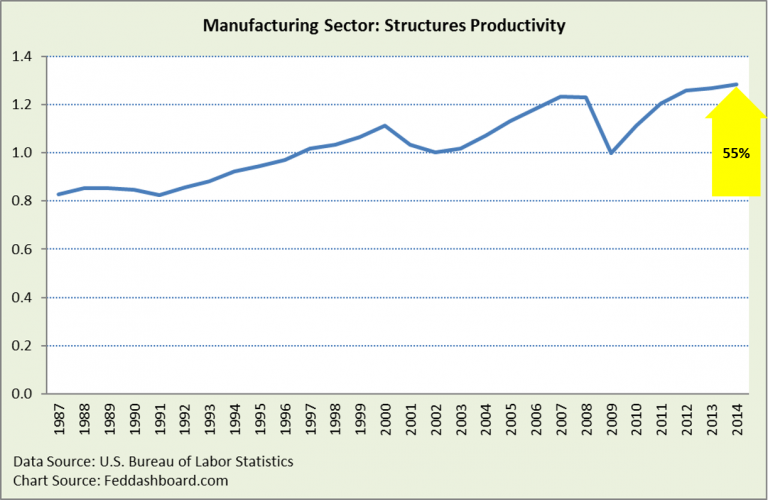Economic “slack” refers to unused resources. Slack matters because estimates of slack then shape economic policy that affect interest rates and markets – and your returns. The problem is that typical measures hide its size. Digging into the data reveals a more dramatic story.
Excess labor capacity (“slack”) is bad for the:
- Smart young man with high trade skill aptitude caught in the trap of “no hires without two years of experience”
- Former corporate accountant now cashier at a big box store to get benefits
- Single mom who just wants to work more hours at a single job
Slack of some amount is good for central banks because it means an economy can grow without fear of inflation.
Resources include physical assets, labor, energy, and materials. Of these, several have distinct stories of supply:
- Energy and materials (especially commodities) are about geopolitics and technology
- Intellectual property (software, R&D and artistic originals) flow endlessly from creative minds
- Land is about terrain and regulation
- Equipment is about technology, but dicey to measure at broad levels because it is difficult to roll-up all the improvements in specific equipment. Equipment is increasingly abundant; even slow to assemble items (airplanes, generators and mining equipment) have ample capacity.
Structures and labor slack are most important to estimate because of their human impact and magnitude.
Labor – hours worked per person could increase 20% to match 1948 levels
Labor hours worked per person is more insightful than counting “employed persons” who only had to work at least one hour in a week to be counted.
Hours worked moves the ratio more than population because hours are more variable.
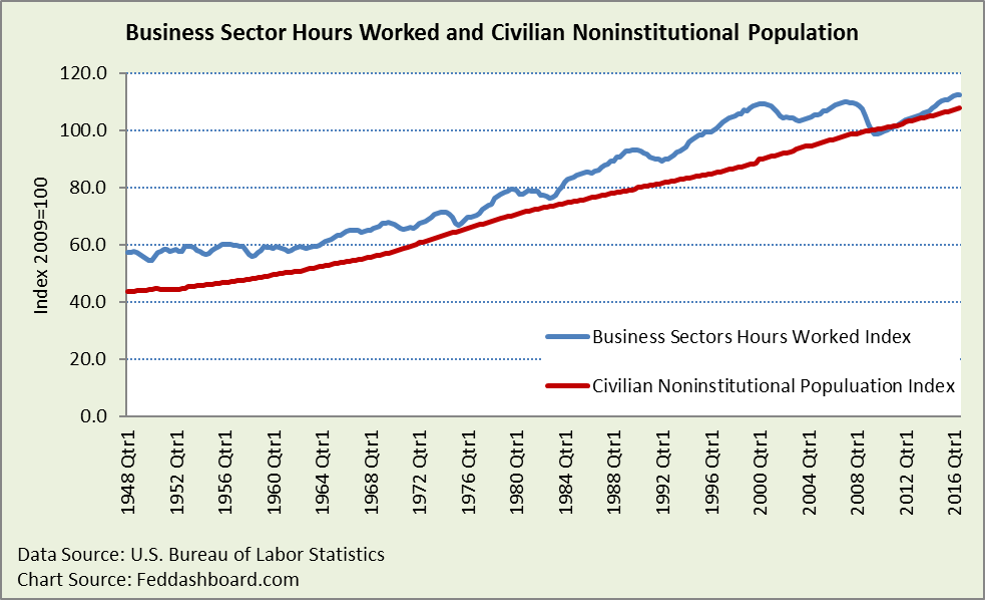 The ratio illustrates today’s hours worked are 20% less than in 1948. However, noticeable uptrends include from 1982 to 1999 and since 2009.
The ratio illustrates today’s hours worked are 20% less than in 1948. However, noticeable uptrends include from 1982 to 1999 and since 2009.
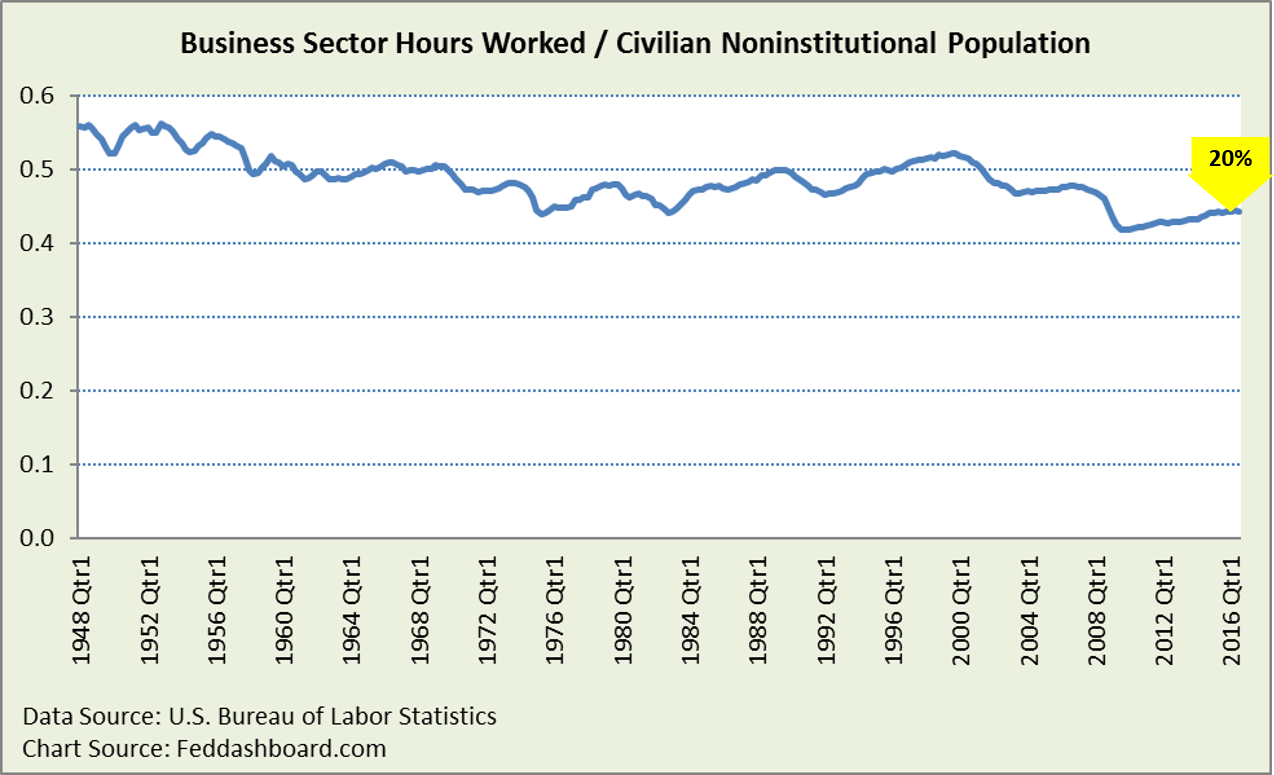 Since 1987, when the ratio was relatively low, we’re working 7.5% less hours. Measuring “per person” as people paid in a week, then the U.S. Bureau of Labor Statistics (BLS) measure of average weekly hours worked is down about 17% since 1948.
Since 1987, when the ratio was relatively low, we’re working 7.5% less hours. Measuring “per person” as people paid in a week, then the U.S. Bureau of Labor Statistics (BLS) measure of average weekly hours worked is down about 17% since 1948.
Due to productivity growth, far more production is available today from hours worked.
Of course, any ratio has its limits. For example, this ratio doesn’t reflect skill available from people who are over-qualified for their jobs or age distribution changes in the population.
Structures – Manufacturing structures productivity up 55% since 1987
Output potential from structures (buildings) is seen in how much output growth has already come from structures.
BLS data is quite detailed for manufacturing starting 1987, so we’ll focus there.
Manufacturing output (production) moves the ratio more because it is more variable.
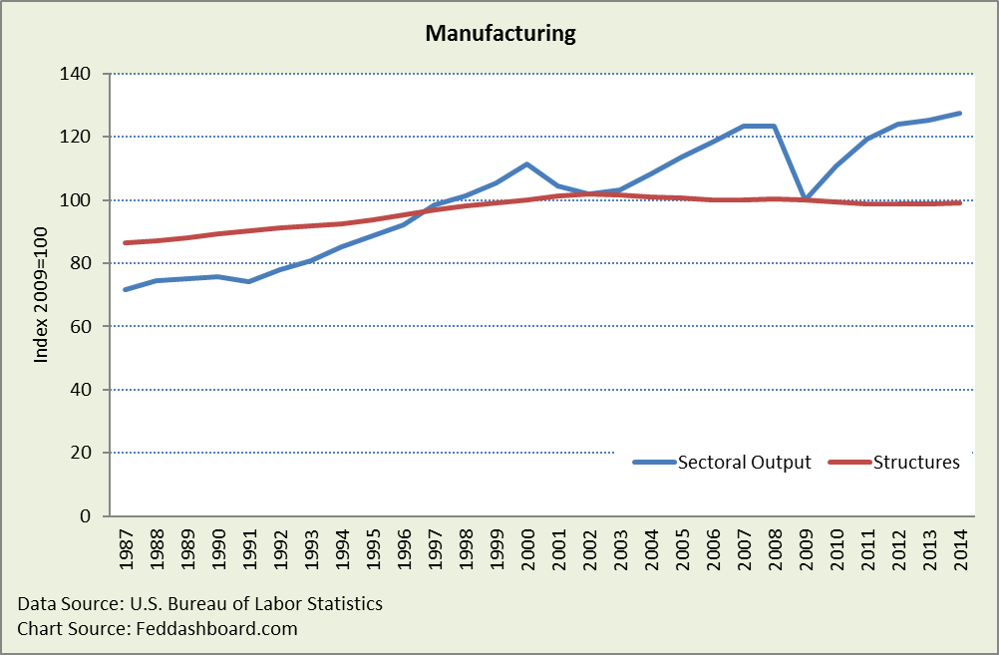 Structure productivity is output divided by structure inputs.
Structure productivity is output divided by structure inputs.
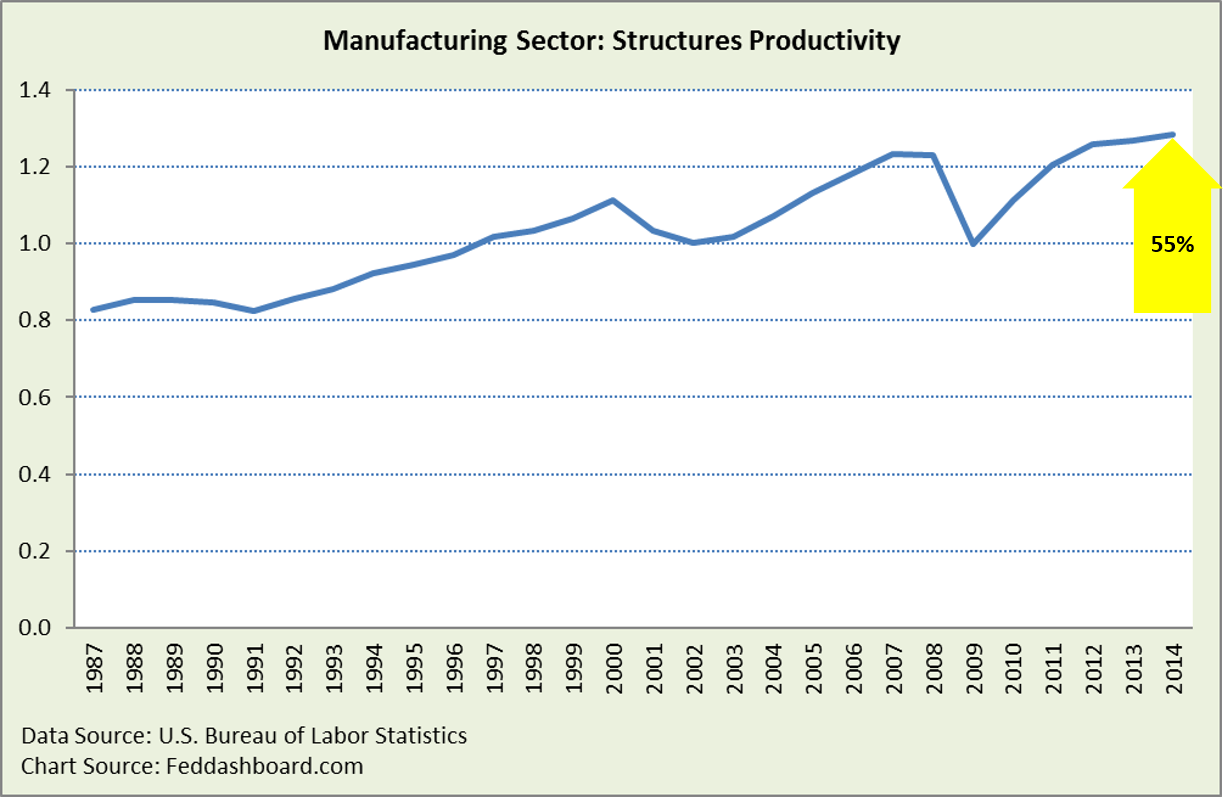 Structure productivity has grown 55% since the mid-1980s when robots were still new and more innovations were in the distant future:
Structure productivity has grown 55% since the mid-1980s when robots were still new and more innovations were in the distant future:
- Communication networks improved internal plant, and external supply and distribution chain coordination
- Manufacturing management methods improved, including smaller footprint manufacturing
- Some products physically shrank
The tough parts of the available structures estimate are the depreciation and efficiency rates. For example, consider how “old” buildings have zoomed back to life. Poster children are pre-WWII decommissioned military bases that are now dynamic high tech parks – from Brooklyn’s Navy Yard to Silicon Valley’s Moffett Field home to NASA Ames Research, Singularity University and Google airplanes.
Dynamics changed due to deep drivers
- Manufacturing shifted to a state of surplus, like farming, as was discussed in Fed is wrong on productivity; here’s how investors can profit from the data
- Costs have fallen for nonmanufactured products ranging from oil extraction to digital services adding to this shift toward abundance
- General inflation pressures are lower, although wages will rise for scarce skills
- The global tech and trade transformation underlies this all
Creating powerful implications for policy
- Training, on-the-job training, retraining and job placement hold great opportunity
- Potential Gross Domestic Product (GDP) and GDP gap are so high they don’t matter as policy variables, as was illustrated in Potential GDP is potentially misleading
- Finding purposes for developed country resources is about more than pumping up domestic demand, especially given high debt levels. It’s about creating conditions for trade and development in the global south.
To learn more about how to apply these insights to your professional portfolio, business or policy initiative, contact “editor” at this URL.
Data Geek Notes:
- Civilian noninstitutional (not in long term prisons or medical facilities) population of people over 16 years of age
- Structures are BLS “Productive Stock” measured on an “age efficiency” basis

